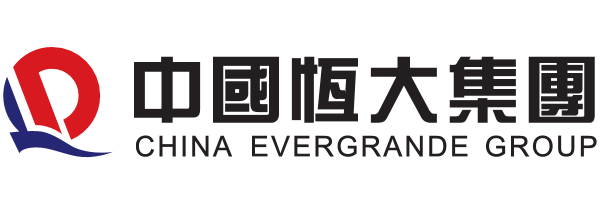A Booking.com global survey released in June laid bare the new expectations of travelers: Some 83% of 29,000 respondents said they found sustainable travel to be vital, with 61% noting that the pandemic has increased their interest in traveling sustainably.
Half added that finding a hotel with actual eco credibility isn’t easy—and they’re right. Hotels that take sustainability seriously don’t often shout it from the rooftops, while others tout themselves as green just for offering an option to skip daily laundering of linen.
The most significant new tool comes courtesy of Google. Starting on Sept. 22, it will label hotels as “Eco-Certified” in global search results, with a leaf-shaped icon next to the hotel’s name. Clicking on the “About” tab will detail the property’s specific sustainability practices, such as having water use audited by an independent organization or using energy from carbon-free sources.
The new feature relies on 29 certification programs to do the hard work of establishing a hotel’s green credibility; the property must have an array of sustainability measures audited by third-party experts. It’ll be up to hotel staff, rather than the search engine, to update hotel listings, using the free Google My Business Profile.
The move is intended to offer travelers more transparency against greenwashing, which runs rampant in the hospitality industry. It also responds to increased search volume around eco-travel buzz words. The term “green hotel,” for instance, has quadrupled in search volume since March 2020, according to Google Trends.
“We’ve worked in close collaboration with hotels to learn more about how they’re approaching sustainability and how to best represent these different approaches within our product,” says Richard Holden, Google’s VP of product management. “Standardization will be key in getting consumers to understand, trust, and take action based on the sustainability information we provide.”
NEW STANDARDS
EarthCheck is among the strictest of the eco credentials Google will recognize. Created in 2000 by Australia’s Sustainable Tourism Cooperative Research Centre (STCRC), the benchmarking system is constantly updated according to the latest research. It already works with 550 hotels globally, including the Langham Hospitality Group, which has cut its energy and carbon intensity by one-third since joining the program in 2011. This month, Belmond, a brand owned by LVMH, announced it would begin the EarthCheck certification process for not only all of its 34 hotels but also its restaurants, cruise ships, and trains. This means that guests staying at Belmond’s properties in Peru can look forward not only to gourmet dining in partnership with the farmers of the Huama community, but also to a lighter-footprint journey to Machu Picchu aboard the brand’s iconic Hiram Bingham train.
Other notable certifications Google will recognize include Green Key, LEED, Green Seal, and Green Globe—all of which have been around for decades—as well as such relative newcomers as the Green Growth 2050 Standard, which since 2015 has been measuring hotels and resorts across 200 sustainability-related metrics. Green Growth has a seal of approval from the Global Sustainable Tourism Council (GSTC), which provides accreditation for certification bodies. Some programs have only a handful of hotels under their umbrella; stumbling upon them without Google’s help would be challenging at best.
What Google won’t show are programs with only self-reported environmental, social, and governance (ESG) data such as investment firm CGI Merchant Group’s new Conscious Certified Hotels program, which donates 1% of room night revenue at select Hilton hotels to local organizations. Such internal sustainability initiatives as Iberostar Hotels & Resorts’ Wave of Change program, which is working toward various goals that include being waste-free by 2025 and carbon-neutral by 2030, also won’t count toward getting an “eco certified” check.
Not all hotels that do good work are accredited, though, partially because of cost—the fee for a bronze Green Seal certification for hotels with fewer than 75 rooms starts at $1,500 annually, for example—and because some schemes are overly focused on a single aspect of greening such as energy efficiency, thus skipping over hotels that concentrate on pro-social endeavors such as promoting ethical wildlife experiences or investing heavily in their communities.
“Hotels are realizing they need a label,” says Hans Pfister, co-founder and president of the Cayuga Collection, a group of sustainable lodges that were among the first to earn certifications from the famously eco-conscious government in Costa Rica. “But there’s a difference between putting a certification on your website and actually walking the walk.”
Instead of spending hours on the paperwork necessary to maintain certifications, Pfister felt energy could be better directed toward new initiatives that enrich local communities and the guest experience. A stay at his private island resort Isla Palenque in Panama could include foraging through 400 acres of protected rainforest for wild ingredients with a local guide or learning traditional fishing techniques preserved by the fishermen of Boca Chica.
A handful of new tools beyond Google can help make it easier to find and book hotels with strong social and environmental values such as Pfister’s.
Preferred Hotel Group’s Beyond Green Travel portfolio is a network of 27 hotels, resorts, and lodges that adhere to the United Nations Sustainable Development Goals. Among its members are Francis Ford Coppola’s hydroelectric-powered hideaways in Belize, Blancaneaux Lodge and Turtle Inn, and andBeyond Mnemba Island in Zanzibar, a protected nesting site for endangered green sea turtles.
Other directories include Rethink Travel, which helps travelers filter for hotels based on such sustainability practices as “fair food,” “waste control,” and “clean energy,” and Green Pearls, which curates and scores its members across such areas as their cultural commitment and authentic guest experiences.
So far, 319 tourism companies, organizations, and individuals have united for Tourism Declares a Climate Emergency, a coalition whose members commit to developing action plans to cut their carbon emissions in half by 2030. Hotel groups including Banyan Tree, Accor, and Iberostar Hotels & Resorts have joined Expedia Group and Unesco in the expansion of the Unesco Sustainable Travel Pledge, which encourages signees to eliminate single-use plastics and support local economies and cultures.
Prince Harry has rallied some of the biggest travel brands—including Booking.com, Skyscanner, Tripadvisor, and Visa—to form a think tank on sustainable initiatives called Travalyst, which Google is also joining. As part of the group, the search titan will help develop a standardized way to calculate carbon emissions for air travel and align its new hotel features with Travalyst’s criteria for sustainable accommodations. With the pre-pandemic tourism industry accounting for about 8% of global greenhouse gas emissions, according to a 2018 study, there’s plenty of pressure to get on the bandwagon.
“It stands to reason that in the context of Covid, people are taking more time to consider what they value in terms of travel and how that impacts the world at large,” says Google’s Holden. “As the travel industry recovers, hotels that can demonstrate a meaningful commitment to sustainability will be well-positioned to meet this growing interest from consumers.” — Bloomberg










